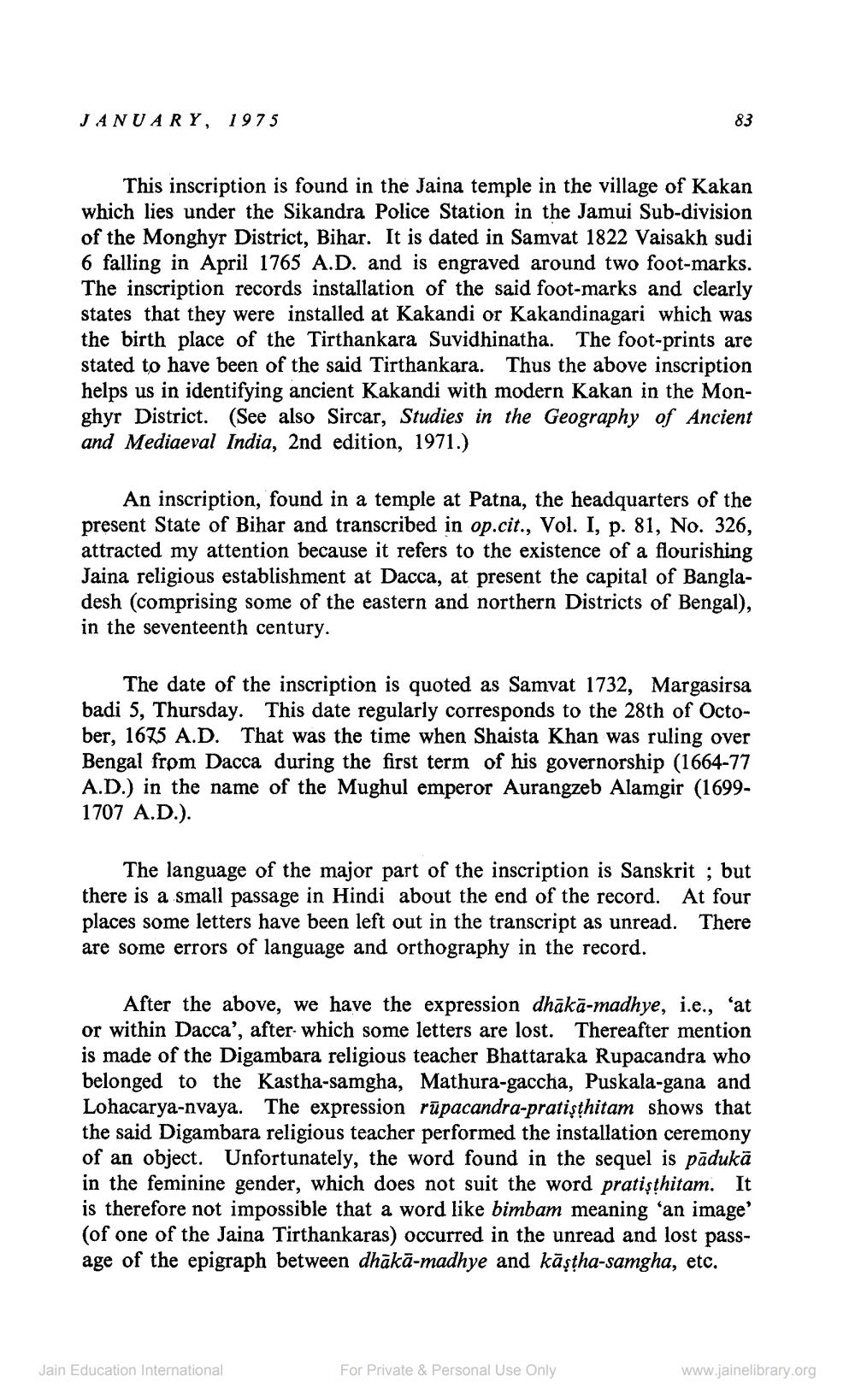________________
JANUARY, 1975
This inscription is found in the Jaina temple in the village of Kakan which lies under the Sikandra Police Station in the Jamui Sub-division of the Monghyr District, Bihar. It is dated in Samvat 1822 Vaisakh sudi 6 falling in April 1765 A.D. and is engraved around two foot-marks. The inscription records installation of the said foot-marks and clearly states that they were installed at Kakandi or Kakandinagari which was the birth place of the Tirthankara Suvidhinatha. The foot-prints are stated to have been of the said Tirthankara. Thus the above inscription helps us in identifying ancient Kakandi with modern Kakan in the Monghyr District. (See also Sircar, Studies in the Geography of Ancient and Mediaeval India, 2nd edition, 1971.)
83
An inscription, found in a temple at Patna, the headquarters of the present State of Bihar and transcribed in op.cit., Vol. I, p. 81, No. 326, attracted my attention because it refers to the existence of a flourishing Jaina religious establishment at Dacca, at present the capital of Bangladesh (comprising some of the eastern and northern Districts of Bengal), in the seventeenth century.
The date of the inscription is quoted as Samvat 1732, Margasirsa badi 5, Thursday. This date regularly corresponds to the 28th of October, 1675 A.D. That was the time when Shaista Khan was ruling over Bengal from Dacca during the first term of his governorship (1664-77 A.D.) in the name of the Mughul emperor Aurangzeb Alamgir (16991707 A.D.).
The language of the major part of the inscription is Sanskrit ; but there is a small passage in Hindi about the end of the record. At four places some letters have been left out in the transcript as unread. There are some errors of language and orthography in the record.
After the above, we have the expression dhākā-madhye, i.e., ‘at or within Dacca', after which some letters are lost. Thereafter mention is made of the Digambara religious teacher Bhattaraka Rupacandra who belonged to the Kastha-samgha, Mathura-gaccha, Puskala-gana and Lohacarya-nvaya. The expression rūpacandra-pratisthitam shows that the said Digambara religious teacher performed the installation ceremony of an object. Unfortunately, the word found in the sequel is pādukā in the feminine gender, which does not suit the word pratisthitam. It is therefore not impossible that a word like bimbam meaning 'an image' (of one of the Jaina Tirthankaras) occurred in the unread and lost passage of the epigraph between dhākā-madhye and kāṣṭha-samgha, etc.
Jain Education International
For Private & Personal Use Only
www.jainelibrary.org




